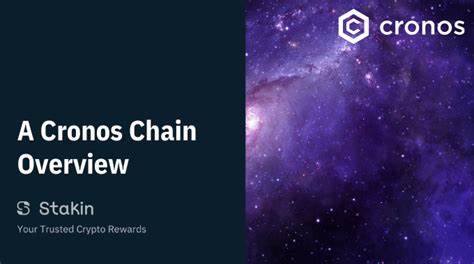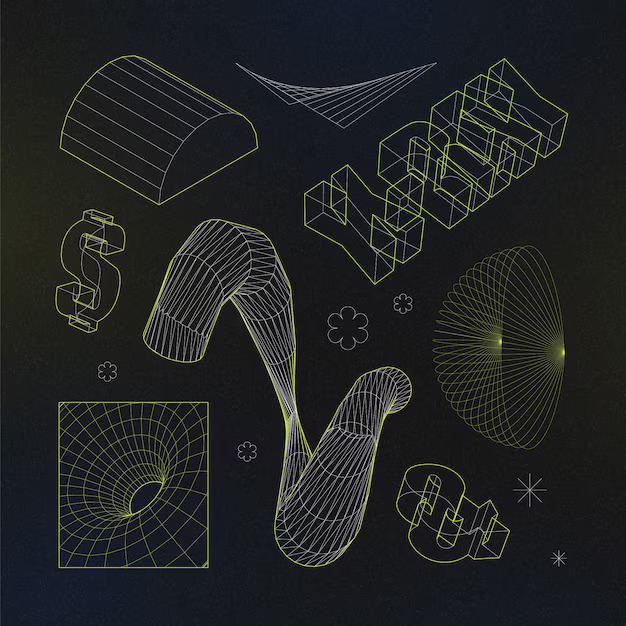Peer-to-Peer Network: What Are P2P Blockchain Networks
To gain insight into decentralized systems, it’s crucial to grasp the underlying principles of how these frameworks operate. First, recognize that every participant acts as an independent node, contributing to a collective operation without relying on a centralized authority. This architecture promotes transparency and allows for a trustless interaction among users.
Data integrity in such systems is maintained through cryptographic methods. Each transaction is verified by multiple nodes, creating a secure environment that resists tampering. Users can reinforce their understanding by exploring consensus mechanisms, which dictate how agreements are reached among participants.
Another key aspect is the role of incentives in maintaining participation. Nodes are often rewarded for validating transactions, encouraging ongoing involvement. Understanding the economic models that support these systems can provide clarity on their sustainability and growth.
Finally, examining the implications of distributed ledger technologies reveals their potential across various sectors. Industries ranging from finance to supply chain management are exploring innovative applications, transforming traditional processes into more efficient practices. Engage with specific case studies to appreciate the practical impacts and future opportunities presented by these systems.
Understanding the Architecture of P2P Blockchain
To grasp the structure of decentralized ledger systems, focus on three primary layers: the data layer, the network layer, and the application layer.
Data Layer: This layer is the foundation, where transactional data is stored. It utilizes cryptographic techniques to ensure integrity and security. Blocks contain transactions, and each block is linked to the previous one via a hash, making tampering nearly impossible. Learn to implement Merkle trees for efficient data verification.
Network Layer: This layer facilitates the communication among nodes. Each participant operates equally, sharing similar responsibilities. Implement the Gossip Protocol to enhance data propagation among nodes. Ensure redundancy to prevent single points of failure, allowing the system to remain operational even if some nodes go offline.
Application Layer: This is where smart contracts and decentralized applications reside. Understand how to write secure and efficient contracts to automate processes. Use platforms like Ethereum or other relevant protocols that support decentralized application development and testing.
Consider scalability challenges. Techniques such as sharding or layer-2 solutions can enhance throughput. Evaluate consensus mechanisms; proof-of-work and proof-of-stake offer different trade-offs in terms of security and efficiency.
Regularly update nodes and software to safeguard against vulnerabilities. Stay informed about the latest security practices to safeguard the integrity of the entire structure.
Key Consensus Mechanisms Used in P2P Networks
Proof of Work (PoW) utilizes computational power to validate transactions. Miners solve complex mathematical problems, requiring significant energy resources. While secure, this method raises environmental concerns and scalability issues.
Proof of Stake (PoS) selects validators based on the number of coins they hold and are willing to “stake.” It reduces energy consumption compared to PoW and speeds up transaction time. Validators are incentivized to act honestly, as malicious behavior risks losing their staked assets.
Delegated Proof of Stake (DPoS) introduces a system of elected delegates who validate transactions on behalf of stakeholders. This allows for higher transaction speeds and greater scalability, enhancing efficiency within the community.
Byzantine Fault Tolerance (BFT) relies on a majority consensus among participants to agree on the transaction history. It ensures that the network can continue to function correctly even if some nodes fail or act maliciously. Variants like Practical BFT and Tendermint offer enhancements for real-time applications.
The Proof of Authority (PoA) model delegates transaction validation to a limited number of authorities. Suitable for private networks, it enhances transaction speeds and reduces the complexity of the consensus process, albeit at the potential expense of decentralization.
Each consensus algorithm has its pros and cons, impacting security, scalability, and energy consumption. Selecting an appropriate mechanism depends on the goals of the network and its specific use cases.
Security Features in P2P Blockchain Technology
Implement a multi-layered security approach for robust protection. Incorporate encryption mechanisms like SHA-256 for data integrity and protection against unauthorized modifications.
Consensus Mechanisms
Utilize consensus algorithms such as Proof of Work (PoW) or Proof of Stake (PoS) to prevent malicious activities. These protocols ensure that all nodes agree on the state of the ledger, mitigating risks of double-spending and enhancing overall trustworthiness.
Decentralization
Distribute data across numerous nodes to minimize the risk of single-point failures. This structural choice increases resilience against attacks since there’s no central entity that can be targeted.
| Security Feature | Description | Benefit |
|---|---|---|
| Encryption | Secures data from unauthorized access. | Ensures confidentiality and integrity. |
| Consensus Mechanism | Facilitates agreement among nodes. | Prevents double-spending and ensures data accuracy. |
| Decentralization | Spreads data across multiple locations. | Increases resilience and reduces attack vectors. |
| Smart Contracts | Automates execution of agreements. | Reduces fraud and enhances efficiency. |
Conduct regular security audits and vulnerability assessments. Stay informed on the latest threats and adapt security protocols accordingly. Employ network monitoring tools to detect suspicious activities promptly.
Real-World Applications of P2P Blockchains
Utilize decentralized record-keeping for supply chain management, enhancing visibility and trust among stakeholders. Companies can track product origins, verify authenticity, and prevent fraud. Platforms like VeChain provide real-time insights into movement and condition of goods.
Financial Services
Implement smart contracts for peer-to-peer lending, reducing reliance on traditional banks. Projects such as Aave allow users to lend and borrow directly from one another, without intermediaries, facilitating lower fees and improved access to credit.
Healthcare Innovations
Secure medical records using distributed ledgers, ensuring patient privacy while allowing authorized access. Solutions like MedRec enable patients to control their own data, fostering better collaboration among healthcare professionals and reducing administrative overhead.
Challenges Facing P2P Blockchain Implementations
Addressing the inherent difficulties of decentralized platforms is crucial for successful deployment. Prioritize the following areas to mitigate issues:
Scalability Concerns
- Implement sharding techniques to distribute data efficiently.
- Consider layer-2 solutions that perform transactions off the main chain.
- Optimize consensus mechanisms for quicker transaction validation.
Security Vulnerabilities
- Conduct regular audits and vulnerability assessments.
- Utilize encryption protocols to safeguard data integrity.
- Encourage node diversity to prevent centralization attacks.
Keep in mind the balance between decentralization and performance to ensure a robust framework for operations.
Future Trends in P2P Blockchain Development
Adopt interoperability protocols for seamless communication among various distributed systems. This will enable diverse platforms to exchange data efficiently, enhancing overall functionality.
Scalability Solutions
Focus on implementing off-chain transactions or layer-2 solutions like state channels to significantly improve transaction throughput. These techniques help reduce congestion on main ledgers, leading to faster confirmation times.
Privacy Enhancements
Incorporate advanced cryptographic methods, such as zero-knowledge proofs, to bolster confidentiality. These innovations allow for transaction validation without revealing sensitive information, appealing to regulatory compliance and user trust.
Emphasize energy efficiency by researching greener consensus mechanisms rather than relying solely on traditional proof-of-work or proof-of-stake. Consider options like proof-of-authority or delegated proof-of-stake to minimize environmental impact.
Explore the integration of artificial intelligence and machine learning to streamline operations and enhance decision-making processes. Automated smart contracts can adapt based on data inputs, improving response times and accuracy.
Monitor developments in legislation surrounding decentralized technologies. Engaging with policymakers can help shape favorable frameworks that encourage innovation while ensuring user protection.
Q&A: What Are P2P Blockchain Networks
What is the difference between a structured p2p network and an unstructured p2p network in terms of node organization and search efficiency?
A structured p2p network organizes its nodes using predefined rules, often based on distributed hash tables, allowing efficient and scalable searches across the network. In contrast, an unstructured p2p network has no fixed topology, making it easier for peers to join or leave the network, but it results in less efficient searches, often relying on flooding or random walks to locate resources.
How does the decentralized nature of p2p networks contribute to the resilience and scalability of blockchain technology?
The decentralized nature of p2p networks eliminates the need for a central authority, allowing each peer in the network to act as both a client and a server. This model ensures that blockchain is a decentralized system, where each node in the network maintains a complete copy of the ledger, enhancing fault tolerance, data integrity, and scalability across the network.
Why is the traditional client-server model considered less robust than peer-to-peer architecture in distributed network applications?
In the traditional client-server model, the server is a single point of failure, limiting network performance and reliability. Peer-to-peer architecture, on the other hand, distributes control among all peers on the network, creating a more robust and fault-tolerant environment ideal for distributed network applications like p2p file-sharing and blockchain.
What are the key benefits of p2p technology in developing decentralized social networks and other modern applications?
P2p technology supports decentralized peer-to-peer interaction, reducing reliance on centralized servers and enhancing privacy, fault tolerance, and freedom from censorship. This makes it ideal for applications of blockchain, decentralized social network platforms, and other use cases where the network is based on direct peer interaction and data is spread across the entire network.
How does a hybrid p2p network differ from other types of p2p network in terms of control and scalability?
A hybrid p2p network combines elements of both centralized and decentralized network architecture, offering more efficient resource discovery and improved scalability. Unlike a fully decentralized peer-to-peer network, a hybrid p2p relies on some centralized components, such as index servers, while still allowing peers to communicate directly, making it a flexible type of p2p network.
Why is blockchain considered a p2p system and what role does network architecture play in it?
Blockchain is a p2p system where each computer, or node participating in the network, holds a copy of the ledger and validates user transactions on the network. This peer-to-peer network architecture eliminates the need for a central authority, supporting a decentralized network structure essential for maintaining transparency and security in the network in blockchain.
What are the advantages of p2p networks over a centralized network in the context of file sharing and data availability?
Peer to peer network models offer higher redundancy and resilience, as each peer in the network can function independently. Unlike a centralized network, which relies on a central server, p2p networks distribute files across multiple nodes, reducing bottlenecks and ensuring better availability. This makes p2p file sharing and similar applications more robust and efficient.
How can p2p networks be categorized based on their structure and how does that affect network performance?
P2p networks can be categorized into structured networks, unstructured peer-to-peer networks, and hybrid p2p networks. Structured networks provide optimized search algorithms using predictable topologies, while unstructured peer-to-peer systems allow any new peer to join the network with minimal configuration. Hybrid p2p networks combine both approaches, aiming to balance efficiency and flexibility in network performance.
How does the p2p architecture used in bitcoin enhance the reliability and transparency of the network of computers involved?
Bitcoin uses p2p architecture to create a network of computers where each node maintains a complete copy of the blockchain. This kind of network is a decentralized system with no central server, allowing any node to join and leave the network freely. The role of peer-to-peer communication ensures that transactions are verified and replicated across all network nodes, enhancing both transparency and fault tolerance.
Why are peer-to-peer networks in blockchain considered a more robust type of network compared to traditional models?
Peer-to-peer networks in blockchain distribute data across all participating nodes, making the system resistant to single points of failure. This type of network supports continuous operation even if some nodes go offline. The benefits of p2p networks include better scalability, increased security, and improved integrity, which are essential in the rise of blockchain and the decentralized nature of bitcoin.

